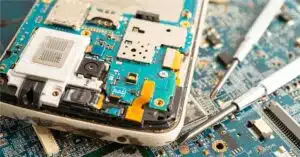By Navid Kazem, Lieven Vervecken, and Claire Wemp The SEMI-THERM 41 Symposium was held March 10-13, 2025 at the Double Tree Hotel in San Jose, CA. Program organization was led by General Chair Lieven Vervecken (Diabatix), Program Chair Dr. Navid Kazem (Arieca), and Program Vice Chair Dr. Claire Wemp (DuPont). It featured a variety of activities including technical short … [Read more...]
Solving the Heat Dilemma for Optical Transceivers: What’s Next for TIMs?
TIMs are vital in optimizing the performance, reliability, and longevity of optical components, such as silicon photonics transceivers in data centers. At Thermal Live Spring 2025, Henkel provided valuable insights into the growing computational demands in data centers and the associated thermal stress risks, highlighting how their thermal interface materials are addressing … [Read more...]
Theta-JC Measurements: Steady-State Compared to Transient Methods
Thermal characterization plays a vital role in electronic package reliability testing, design, and verification of manufacturing processes. The reliability of electronic packages is controlled, in part, by ensuring the maximum junction temperature is not exceeded during operation. Systems such as cell phones, electric vehicles and computers, must operate with die temperatures … [Read more...]
Summary of the IEEE ITherm 2023 Conference
The IEEE Intersociety Conference on Thermal and Thermomechanical Phenomena in Electronic Systems (ITherm) was held at the JW Marriott Grande Lakes, Orlando, FL, May 30 – June 2, 2023. This was the 22nd ITherm, which was first held in 1988. The conference was historically held every other year until 2016 when it switched to an annual schedule. ITherm 2023 was sponsored by the … [Read more...]
Utilizing Laser Flash in Combination with Finite Element Modeling to Analyze Thermal Conductivity of Interfaces and Layers within Complex Structures
Abstract The utility of the laser flash thermal conductivity measurement can be greatly expanded to more complex structures by modeling laser flash results using Finite Element Models. This approach is illustrated using a test fixture with 4 heat sinks, where heat spreading is a significant factor. If traditional 1D thermal diffusion models for laser flash are used, thermal … [Read more...]
- 1
- 2
- 3
- …
- 44
- Next Page »










